The effectiveness of cigarette butt receptacles at bus stations
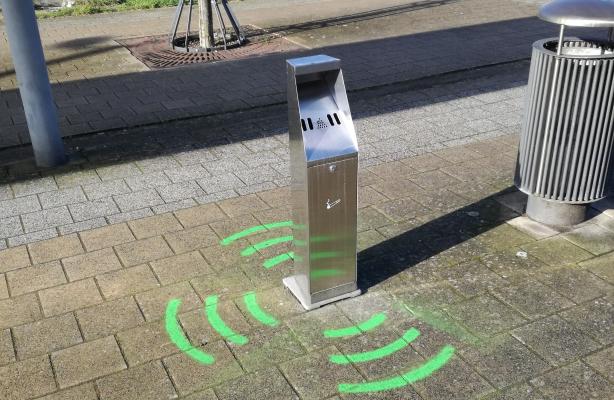
Cigarette butts on the ground: a well-known problem in Flanders. Did you know that as much as 41% of the pieces of litter lying around are cigarette butts? And that public transport stops are in the top three dirtiest locations in Flanders. A good enough reason to investigate what solutions can provide some relief here.
Mooimakers (in collaboration with De Lijn and the cities of Sint-Niklaas, Tienen, Sint-Truiden and Mechelen) investigated one of the possibilities, known as 'cigarette receptacles'. And more specifically, what impact they have on cleanliness at bus stations.
Objective
The objective of the research was threefold
-
Assessing how many fewer cigarette butts are left lying around at bus stations after the placement of cigarette receptacles
-
Assessing which cigarette receptacle works better: cigarette poles or cigarette tiles
-
Assessing whether nudges around cigarette receptacles create any additional impact
The research in a nutshell
The research began in November 2020 and ran until June 2021. During that time, the research team visited four locations where the cigarette butt counts were taking place:
-
Sint-Niklaas bus station
-
Tienen bus station
-
Sint-Truiden bus station
-
Mechelen bus station
There, they conducted two counts each time:
-
The number of cigarette butts on the ground. Before (the baseline measurement) and after the placement of cigarette receptacles (the impact measurement).
-
The number of bus station users.
For this research, two types of receptacles were used:
-
The cigarette tile = a grid level with the ground where smokers can insert their cigarette.
-
The cigarette pole = a pole at arm height where smokers can deposit their cigarette.
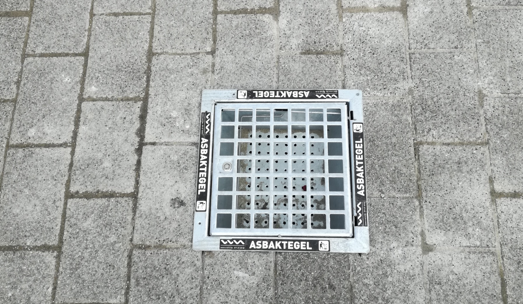
Cigarette tile
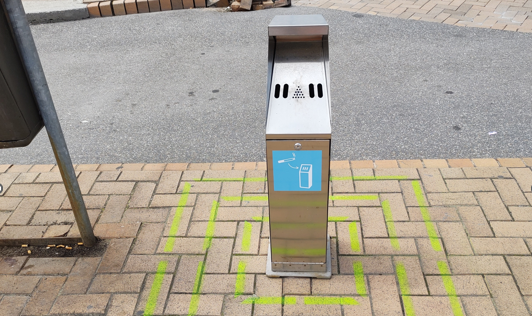
Cigarette pole
The counts took place weekly on a set walking route. To avoid double counting, the research team collected all the cigarette butts counted. That way, they ensured the most reliable measurement possible.
And 'as reliable as possible' was all the more important here. During the 14 weeks (spread over 8 months) that the research was running, Belgium was in full coronavirus crisis, with measures changing frequently. At times, there was also snow, which meant that cigarette butts could not be seen – let alone counted. The research team took these external factors into account and delayed measurements or identified additional variables, so as to eliminate or minimise the influence of these factors.
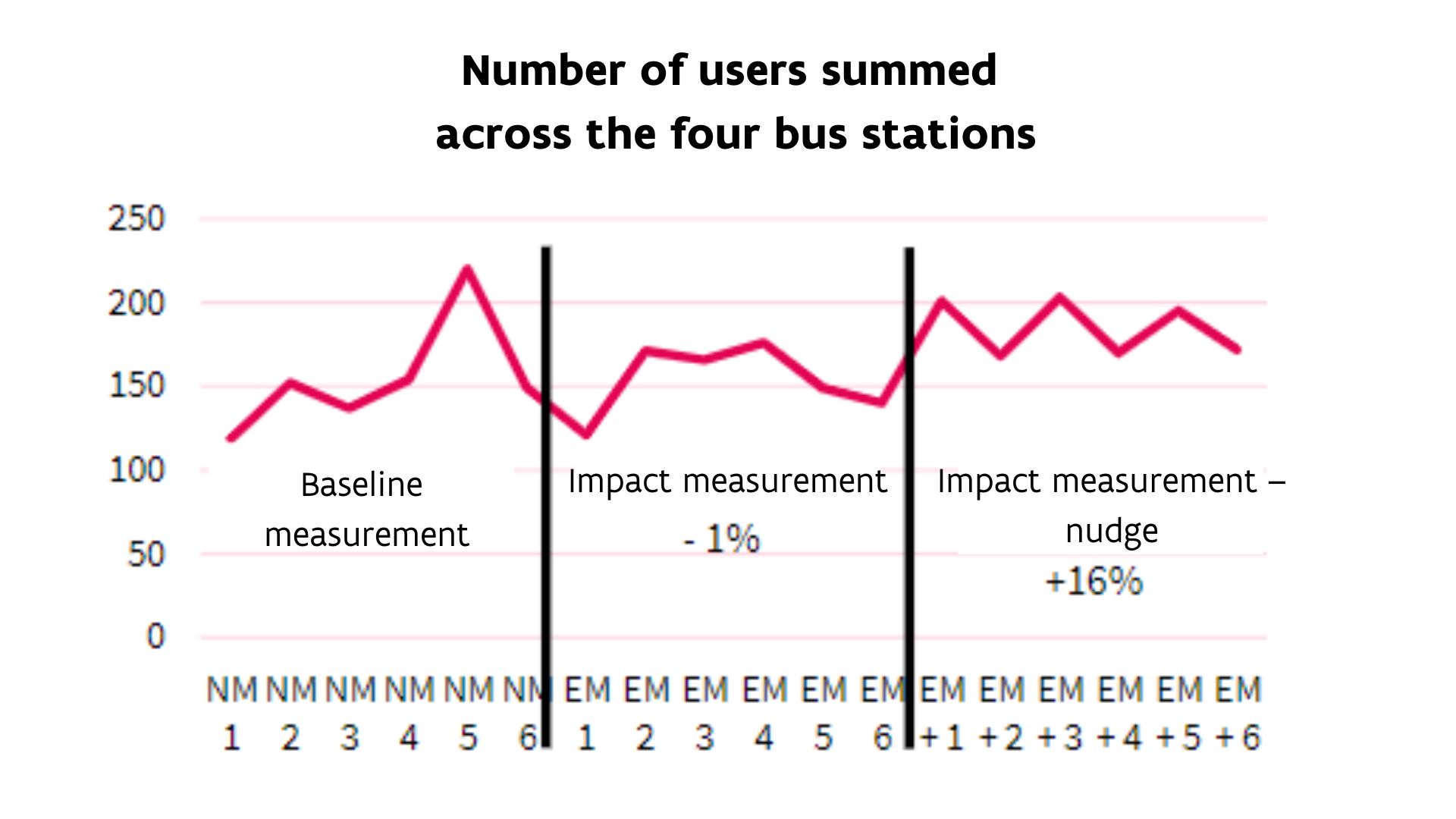
They started with a baseline measurement: the condition at the bus stations, without any addition of cigarette butt receptacles being known. They knew how many cigarette butts there were and how many users were linked to them. And what transpired? Every 12 minutes, a new cigarette butt lands on the floor.
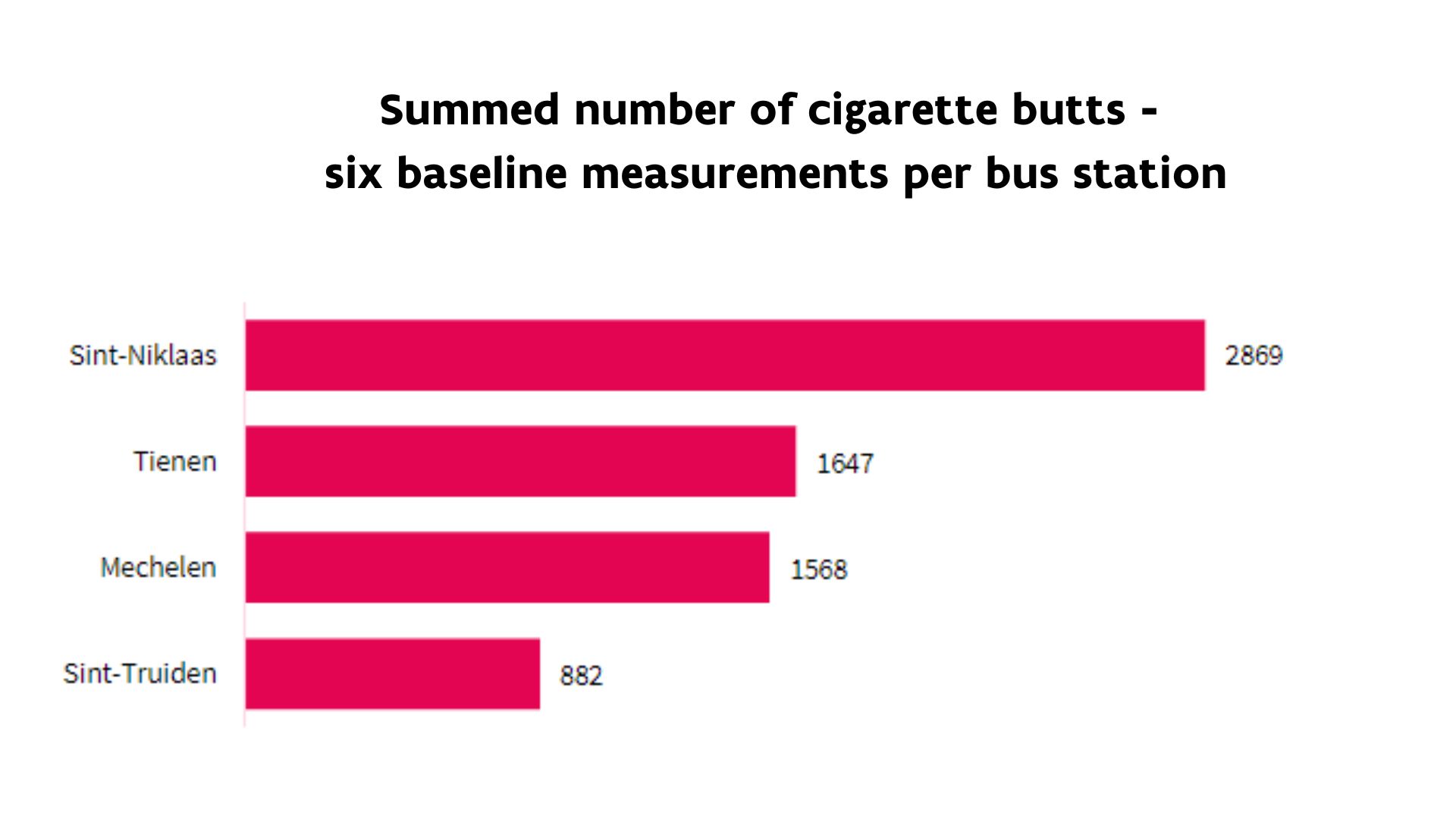
The impact of cigarette butt receptacles at bus stations.
The key results at a glance:
-
More cigarette butts in the impact measurement:
The number of cigarette butts found in the impact measurement was 18% higher than in the baseline measurement. The researchers concluded from this that smokers are less likely to throw their cigarette butts into the storm drain or rubbish bin when a cigarette receptacle is present.
-
One in four cigarette butts ends up in cigarette receptacles:
A quarter fewer cigarette butts were lying around at the stations after placing such a tile or pole.
-
The cigarette pole does better than the tile:
Almost twice as well, even. And this is without any form of 'nudging'*
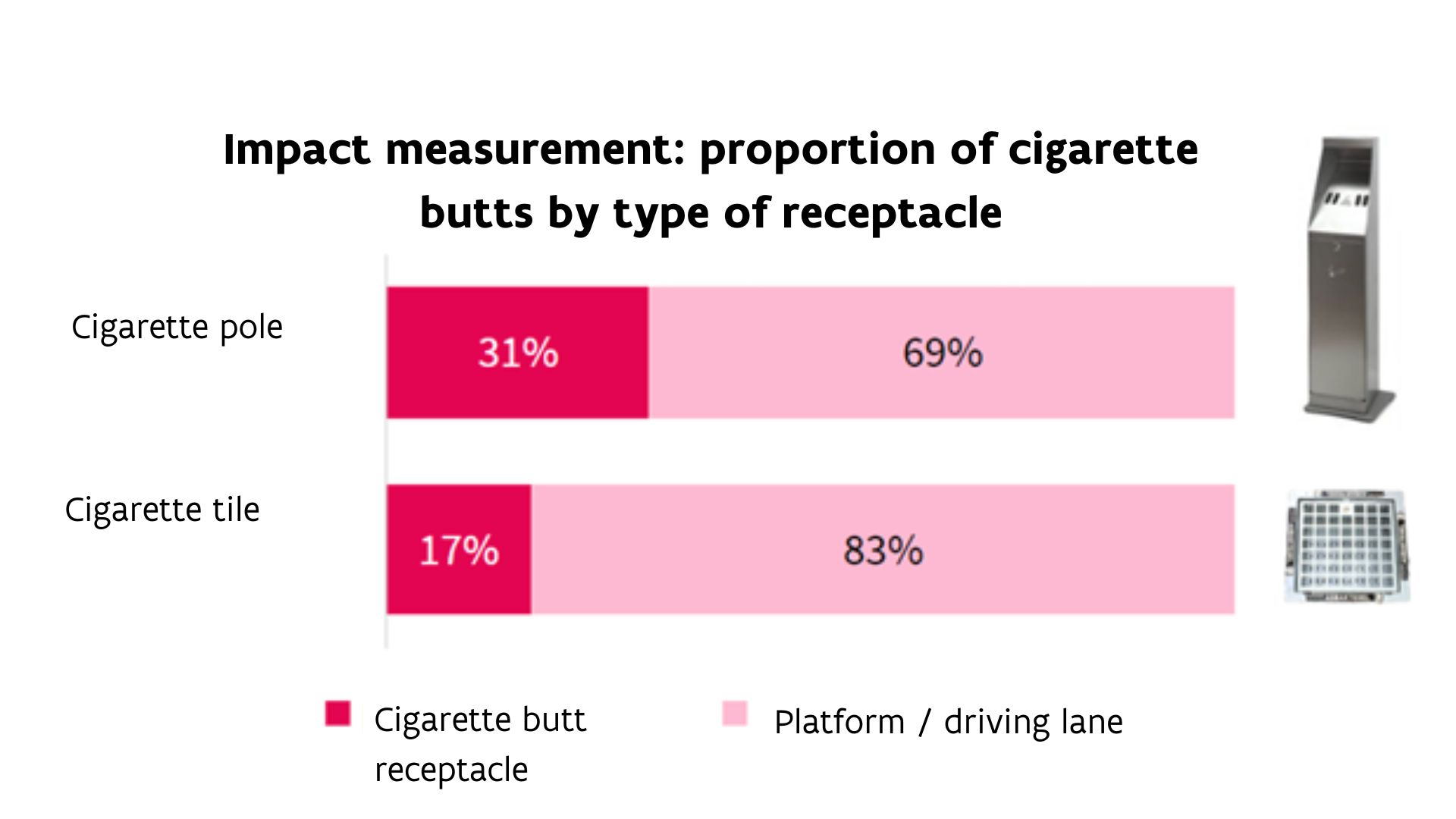
-
The visibility and location of cigarette receptacles seem more important than the number:
Some bus stations had more receptacles, but that did not necessarily lead to better results. Visibility linked to type (the pole is simply more visible than the tile) and location (at the 'head' of a platform or next to a rubbish bin) appear to be more important than quantity.
Nudging
Nudging literally means 'to give a push'. Positive choices are pushed forward in a subtle manner, without taking away or disadvantaging the other choice options.
After an initial impact measurement (after placing tile and/or post), a second measurement was taken. This time, to measure whether an additional 'nudge' had any impact. A 'nudge' here consisted of adding fluorescent green borders around the receptacle and placing an additional icon or blue sticker that visualised usage.
-
After adding a 'nudge', one in three cigarette butts ended up in the cigarette receptacles (36%).
A 12% increase over the impact measurement without a nudge.
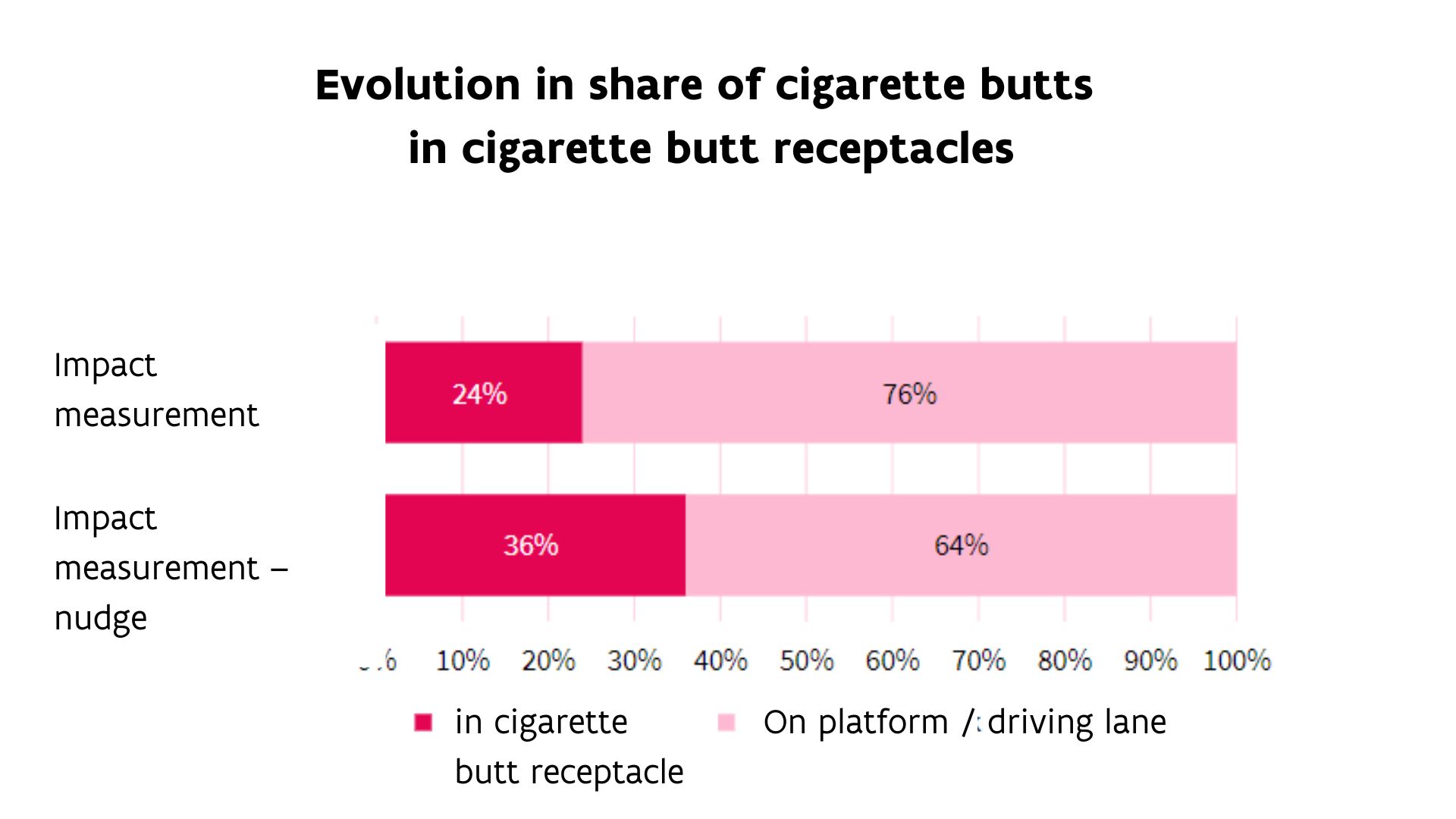
"The nudge achieves an additional 50% increase in effectiveness over and above the placement of cigarette butt receptacles."
So more cigarette butts were collected and noticeably fewer were on the ground. This not only around the receptacles themselves. The effect of the receptacles and nudges encompassed the entire bus station and continued to work for the entire duration of the measurement period.
Conclusion
Placing a specific receptacle for cigarette butts causes a significant reduction in cigarette butts on the ground. Effectiveness increases when using a highly visible receptacle, placed in the right location and reinforced by applying nudging.